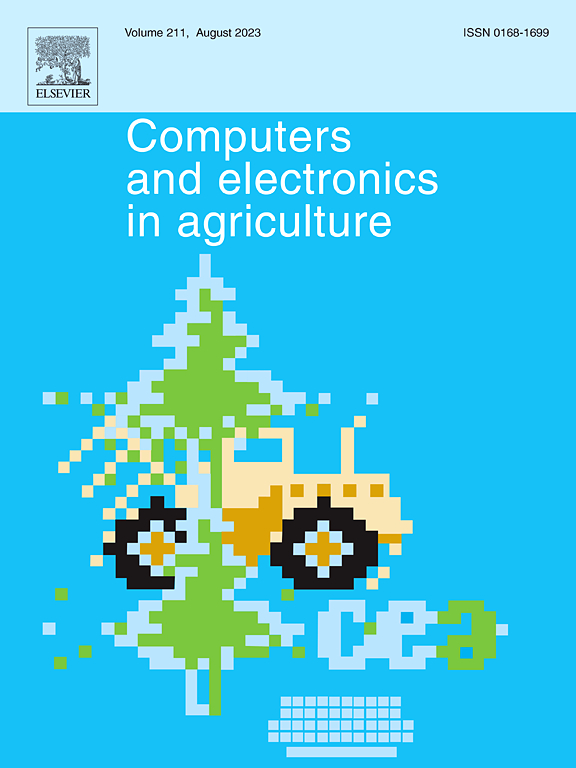A novel architecture for automated delineation of the agricultural fields using partial training data in remote sensing images
IF 7.7
1区 农林科学
Q1 AGRICULTURE, MULTIDISCIPLINARY
引用次数: 0
Abstract
Digital agricultural services (DAS) rely on timely and accurate spatial information of agricultural fields. Initiatives, including deep learning (DL), have been used to extract accurate spatial information using remote sensing images. However, DL approaches require a large amount of fully segmented and labelled field boundary data for training that is not readily available. Obtaining high-quality training data is often costly and time-consuming. To address this challenge, we develop a multi-scale, multi-task DL-based novel architecture with two modules, an edge enhancement block (EEB) and a spatial attention block (SAB), using partial training data (i.e., weak supervision). This architecture is capable of delineating narrow and weak boundaries of agricultural fields. The model simultaneously learns three tasks: boundary prediction, extent prediction and distance estimation, and enhances the generalisability of the network. The EEB module extracts semantic edge features at multiple levels. The SAB module integrates the features from the encoder and decoder to improve the geometric accuracy of field boundary delineation. We conduct an experiment in Ille-et-Vilaine, France, using time-series monthly composite images from Sentinel-2 to capture key phenological stages of crops. The segmentation output from different months is combined and post-processed to generate individual field instances using hierarchical watershed segmentation. The performance of our method is superior in both pixel-based (86.42% Matthew’s correlation coefficient (MCC)) and object-based accuracy measures (76% shape similarity and 60% intersection over union (IoU)) to existing multi-task models. The ablation study shows that the EEB and SAB modules enhance the efficiency of feature extraction relevant to field extent and boundaries and improve accuracy. We conclude that the developed model and method can be used to improve the extraction of agricultural fields under weak supervision and different settings (satellite sensors and agricultural landscape).
求助全文
约1分钟内获得全文
求助全文
来源期刊

Computers and Electronics in Agriculture
工程技术-计算机:跨学科应用
CiteScore
15.30
自引率
14.50%
发文量
800
审稿时长
62 days
期刊介绍:
Computers and Electronics in Agriculture provides international coverage of advancements in computer hardware, software, electronic instrumentation, and control systems applied to agricultural challenges. Encompassing agronomy, horticulture, forestry, aquaculture, and animal farming, the journal publishes original papers, reviews, and applications notes. It explores the use of computers and electronics in plant or animal agricultural production, covering topics like agricultural soils, water, pests, controlled environments, and waste. The scope extends to on-farm post-harvest operations and relevant technologies, including artificial intelligence, sensors, machine vision, robotics, networking, and simulation modeling. Its companion journal, Smart Agricultural Technology, continues the focus on smart applications in production agriculture.
 求助内容:
求助内容: 应助结果提醒方式:
应助结果提醒方式:


